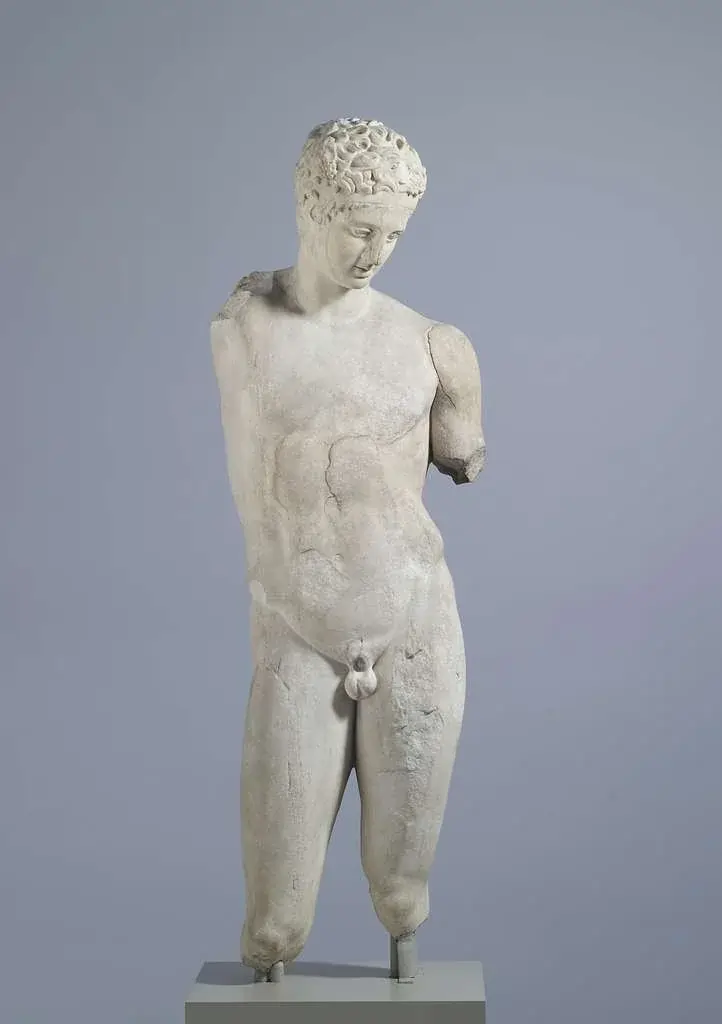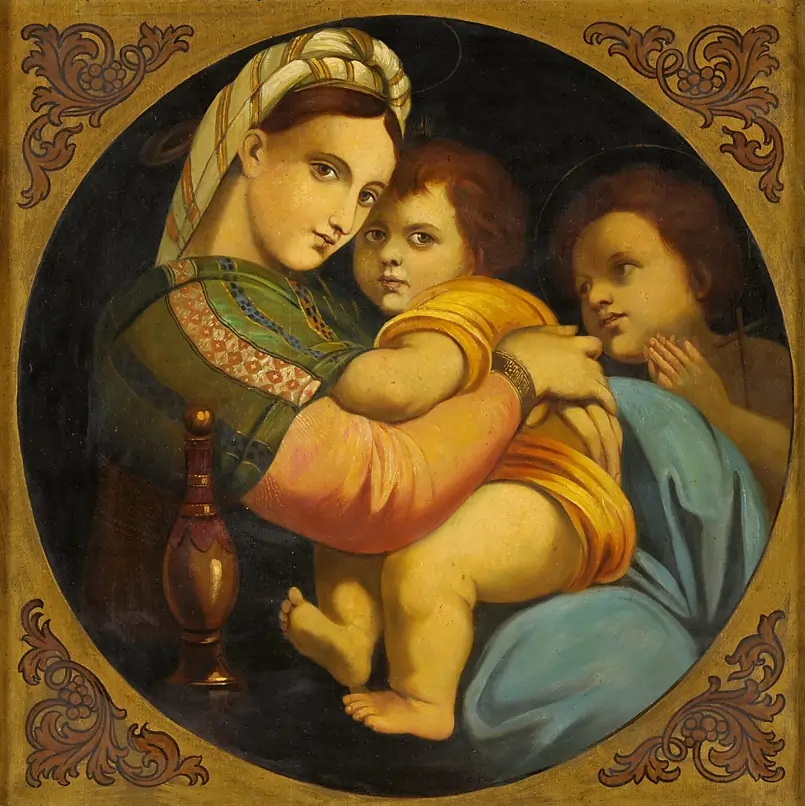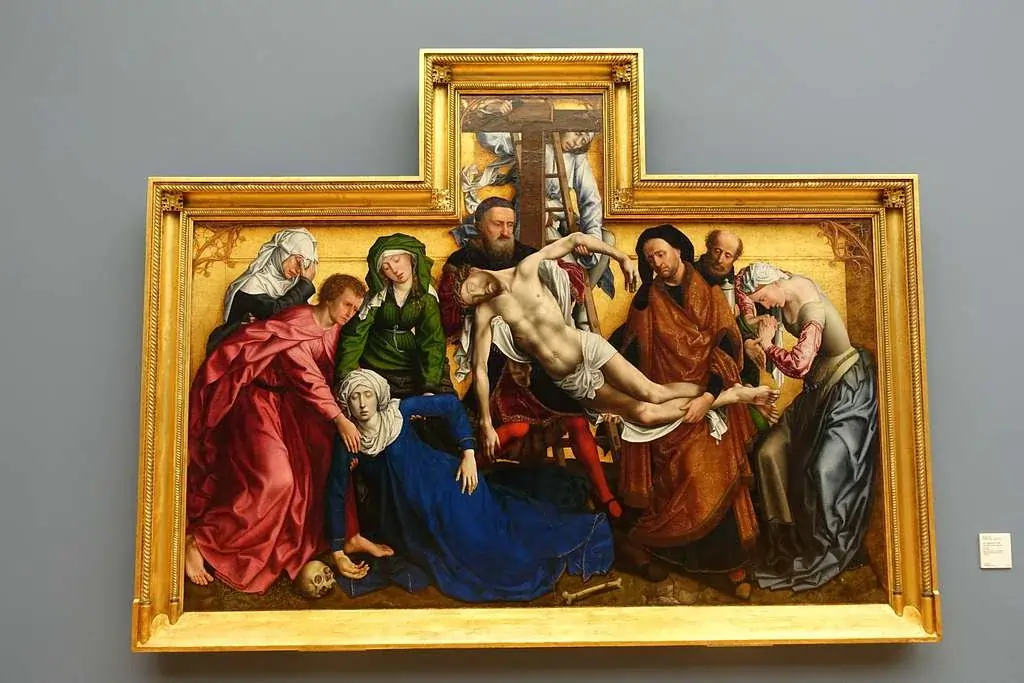Imagine a timeless work of art that has enchanted viewers for, than two millennia. The satyr pouring wine sculpture that flawlessly embodies the essence of Greek mythology using bronze and marble materials. This extraordinary masterpiece is renowned as one of the creations, from ancient classical times.
We are captivated by this timeless satyr sculpture not for its excellence but also, for the narratives it conveys. The satyr statue signifies more than artistry. It captures the profound heritage of ancient Greek civilization and their intimate relationship, with wine.
Let’s delve into the captivating history of this masterpiece together! We’ll explore how the talented sculptor Praxiteles brought it to life with symbolism and artistic flair that has stood the test of time through the ages and continues to captivate audiences today.
Table of Contents
ToggleThe Origins of Praxiteles' Masterpiece
Let’s travel back, to the city of Athens and immerse ourselves in the world of Praxiteles. A sculptor known for creating masterpieces that still captivated audience century’s later during the 4th century BC, in Greece.
The artistic genius of Praxiteles
We can truly admire Praxiteles for his skill demonstrated in his use of fine grained Parian marble and his unique artistic style that sets him apart, from others in the field.
- Creating sinuous curves and unmuscled adolescent bodies
- Bringing unprecedented grace and charm to his subjects
- Developing innovative sculptural techniques
Dating and historical context
The ancient sculpture depicting a satyr pouring wine dates, to 370-360 BC and signifies an important era in Classical Greek art history that captivates me greatly. It’s intriguing to note that although the original bronze statue has been lost to time we have glimpses of its grandeur preserved in replicas scattered across the ages. In a find in 1657 at Emperor Domitian’s residence, in Castelgandolfo villa unearthed four identical copies of this remarkable artwork.
Significance in Classical Greek art
This piece stands out for its portrayal of the realm of Dionysus capturing a goat eared satyr delicately pouring liquid from a jug, in his raised hand into a dish below with grace and artistry showcasing Praxiteles’ skill, in evolving conventional satyr depictions into a more sophisticated and graceful form.
The impact of the statue lasted past its era; this is shown by the Roman versions made from the late Republican to Antonine periods that closely match the original in size and stance. A testament, to Praxiteles’ lasting artistic legacy.
Symbolism and Mythology
Exploring mythology always captivates me as I ponder the way satyrs symbolize the essence of nature and joyous festivities. They stand out with their attributes such, as horse ears and tails and their perpetual affinity, for revelry and joyfulness.
Satyrs in Greek mythology
Let me paint you a picture of these fascinating beings. Satyrs were nature spirits who:
- Loved wine, music, and dancing
- Inhabited remote woodlands and mountains
- Displayed both wisdom and wildness
- Possessed horse-like features that evolved to become more human-like over time
Connection to Dionysus and wine culture
The connection, between satyrs and Dionysus is really fascinating, to me! As supporters of the god of wines teachings and ways of life they played roles in his divine group called thiasos. The Greeks viewed drinking wine as an act that needed ceremonies to differentiate themselves from other cultures they considered less civilized. They even thought that consuming wine could lead people to lose their minds or worse face death.
Religious and cultural significance
I’m fascinated by the presence of satyrs, in Greek religious customs! They held positions in festivals such as the Anthesteria festival as they joyously marked the unveiling of fresh wine vessels. Their impact even reached into drama with the emergence of satyr plays around the 6th century BCE. These productions featuring choruses adorned as satyrs served as a link, between celestial insight and mortal comprehension.
The statue of the satyr pouring wine impresses me, with its ability to embody symbolism. Showcasing both the tradition of wine serving and the untamed essence of these mythical creatures. Demonstrating them not as beings but as polished attendants of Dionysius illuminates the Greeks’ nuanced fusion of devotion and societal customs.
Artistic Elements and Style
Upon observing the intricacies of this piece of artistry I am captivated by the exquisite harmony, between technical accuracy and creative elegance. The depiction of the satyr gracefully pouring wine encapsulates a sense of equilibrium both in a metaphorical sense.
Anatomical features and pose
The statue showcases exceptional anatomical detail through:
- A naturalistic contrapposto stance, with weight shifted to the left leg
- A graceful upward extension of the right arm holding a pitcher
- A downward gaze following the line of the lowered left hand
- Short, tousled hair crowned with a delicate wreath
Sculptural techniques employed
The way the sculptural work is done really captivates me! This piece showcases the use of Parian marble which is famous, for its smooth texture and top notch quality. If you look closely at it you’ll notice the tree shaped support behind the leg, with intricately carved knobs and traces of cut branches. The graceful curves and slender youthful figure truly capture the essence of sculpture.
Influence on Hellenistic art
Upon inspection of the statues influence, on art pieces I notice how it connects the progression from Classical to Hellenistic styles. The sculpture illustrates the shift from postures to depictions. This change signified a development in sculptural works as notions of perfection started integrating a touch of realism and elegance. The widespread reproduction during eras with over thirty documented duplicates signifies its lasting impact, on artistry.
Journey through Time
The captivating tale of the satyr pouring wine across the ages feels like an archaeological adventure, to me! It’s truly incredible how this work of art has endured over centuries of history and continues to reveal its story through replicas and intriguing finds.
Roman replicas and variations
The satyr statue was highly popular, in Rome and archaeologists have found around thirty Roman era replicas of it far. All displaying a striking level of similarity that indicates they were likely crafted from a shared bronze original piece. What I find particularly intriguing is the fact that affluent Romans of that time period would commission these duplicates to adorn their estates and outdoor spaces as a statement of refinement and elegance.
Discovery and excavation history
The most dramatic discovery came in 1657, when workers unearthed four identical replicas at Emperor Domitian’s villa in Castelgandolfo. Another significant find occurred in 1890 at Porto d’Anzio during excavations for the Villa Mengarini. These discoveries helped piece together the statue’s historical puzzle.
Modern museum preservation
I’m particularly impressed by the statue’s journey through various prestigious collections. The Walters Art Museum acquired their copy in 1928, while other versions found homes in renowned institutions like the J. Paul Getty Museum. Modern preservation efforts have been extensive, including:
- Regular cleaning and maintenance procedures
- Loss compensation work
- Technical analysis using X-ray diffraction
The impact of the statue remains strong now. Is showcased in significant displays such, as “From Alexander to Cleopatra; Greek Art during the Hellenistic Era”. What stands out to me the most is how each finding and conservation endeavor contributes a segment, to the heritage of this magnificent piece.
Conclusion
Today as I gaze upon the impressive satyr statue, before me I am struck by the way this piece of art encapsulates aspects of Greek culture in a unique manner Praxiteles’s skillful craftsmanship turned an untamed forest being, into a graceful wine server crafting a masterpiece that harmoniously blends technical expertise with rich cultural significance.
By examining replicas and significant archaeological findings of this statue reveals an intriguing narrative, about the artistry of the classical era alongside references to mythology and ceremonial practices involving wine consumption. Each existing rendition contributes insights into the cultural heritage of ancient Greece and its enduring impact, on Roman society.
I find it truly remarkable how this particular piece of art still manages to capture the attention of people after two thousand years have passed by. Whether we analyze its symmetry or unravel its deep symbolic meanings or follow its historical odyssey over time the satyr pouring wine stands as a symbol of the lasting influence of classical sculpture. This exceptional creation teaches us that exceptional art surpasses boundaries and communicates, with viewers throughout generations while upholding the grace and knowledge of Greek culture.
FAQs
Q1. Who created the original Satyr Pouring Wine sculpture? The original Satyr Pouring Wine sculpture was created by Praxiteles, a renowned Attic sculptor of the 4th century BC. He was known for his innovative techniques and graceful style in Greek art.
Q2. What is the significance of the Satyr in Greek mythology? Satyrs were nature spirits in Greek mythology, associated with wine, music, and revelry. They were followers of Dionysus, the god of wine, and played important roles in religious festivals and theatrical performances.
Q3. How has the Satyr Pouring Wine statue influenced art history? The statue has had a lasting impact on classical art, bridging the transition from Classical to Hellenistic styles. Its popularity led to numerous Roman replicas, and it continues to influence sculptural techniques and representations of mythological figures.
Q4. Where can one see versions of the Satyr Pouring Wine statue today? Copies of the Satyr Pouring Wine statue can be found in several prestigious museums worldwide, including the Walters Art Museum and the J. Paul Getty Museum. These institutions preserve and display various Roman replicas of the original Greek masterpiece.
Q5. What materials and techniques were used in creating the Satyr Pouring Wine statue? The original statue was likely made of bronze, while many surviving Roman copies are crafted from fine-grained Parian marble. The sculpture showcases advanced techniques such as the contrapposto stance and naturalistic detailing, demonstrating the high level of skill in classical sculpture.



